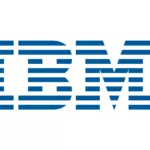Since their introduction years ago, enterprise apps have been fueling all types of corporate processes and greatly enhancing employee productivity. Workers and businesses of have benefited across the board, thanks to the enterprise application’s ability to enhance mobility via the inclusion of smart devices. Without integration though, even the most intelligent enterprise apps begin to feel cumbersome, leading to lost productivity and decreased profits.
Integration Leads to Fast, Streamlined Workflow
Despite the fact that many enterprise applications promise to provide all the answers – and despite the fact that many of these apps do allow for multiple functions on one easily accessed place, no single app offers a be-all, end-all user experience. When several complex applications are installed, and those apps don’t communicate with one another, users find themselves burdened with unnecessary data, engaged in repetitive processes, and ultimately working at a far slower pace than they could with integrated apps.
Integration merges essential data and creates a single space for users to engage seamlessly with all the enterprise apps required for completing the task at hand. Customizable micro apps make it easy for workers to switch rapidly from one task to the next, rather than sifting and sorting through heaps of siloed data.
A Straightforward Approach Improves the Customer Experience
Consumers demand quality and efficiency. With integrated enterprise apps come streamlined processes, and from streamlined processes comes an increased likelihood that the customer experience will be a positive one.
Time after time, surveys show that consumer satisfaction is directly correlated to business success. According to the 2015 Global State of Multichannel Customer Service Report, an astounding 97 percent of consumers worldwide consider customer service to be an important factor when considering choice and forming brand loyalty. NewVoiceMedia notes that poor customer service causes U.S. companies to lose approximately $41 billion annually. The same report notes that customers leave due to a variety of factors, and it’s easy to see how clunky enterprise software might contribute to some of them:
- 53% of dissatisfied consumers felt unappreciated
- 42% felt that customer service agents were rude or unhelpful
- 32% were aggravated by the need to speak with multiple agents
- 29% felt that customer service employees weren’t knowledgeable enough
- 25% were angered after being kept on hold
Although there’s more to a customer experience than the technology that workers use when interacting, the speed and efficacy of that technology does make an impressive difference. Integrating enterprise apps speeds transactions, prevents employees from conducting lengthy searches or transferring calls to others who have access to different data, and eliminates bottlenecks that happen when users are forced to search multiple applications to find the information they need to process requests.
Streamlining Makes for Better Decision-Making
Bertram Gross introduced the term “information overload” way back in 1964, defining it as occurring “when the amount of input to a system exceeds its processing capacity. Decision makers have fairly limited cognitive processing capacity. Consequently, when information overload occurs, it is likely that a reduction in decision quality will occur.”
Without integration, enterprise apps subject workers to far too much information than they can reasonably process. When presented with simply packaged relevant information, workers are far less likely to succumb to the effects of mental overburden. Integrating enterprise apps clears the way forward for human decision makers, enabling quick, decisive, and appropriate action.
When Integrated, Enterprise Apps Can Be Habit-Forming
There is a surprising connection between human habits and the way enterprise applications are delivered. Consider for a moment the powerful role that habit plays in your own life: You perform certain actions without really thinking. Whether you are driving, getting ready for your day, or winding down, you do certain things in a specific way.
While habitual action has been part of the human experience forever, developers have only recently come up with methods to use addictive technology to engage workers, in turn creating beneficial habits. Integrated enterprise apps replace awkward interfaces with logical portals that deliver triggers such as notifications, leading to habitual actions. When action is completed, positive reinforcement in a form as simple as checking a to-do off a list takes place, rewarding the worker. When tasks become habitual and feel pleasant, fewer mistakes are made and work is completed faster. Furthermore, employees are better engaged, and are more motivated to leap forward into the next task.
Simplicity Enhances Effectiveness
With simplicity comes greater clarity and focus; and it is in an atmosphere of such precision that productivity thrives. When enterprise apps are integrated and users are liberated from complicated, repetitive processes, quality suddenly takes precedence over quantity and tasks are completed quickly, logically, and intuitively. Freeing workflows from vast, tangled knots into tidy, easily digested packets leads to far greater productivity and effectiveness.








